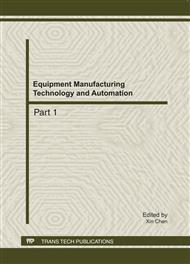p.2351
p.2359
p.2367
p.2373
p.2378
p.2383
p.2388
p.2393
p.2398
Research on Prediction Method and Model for Maintenance Spare Parts Requirements of Armored Equipments in Wartime
Abstract:
Nowadays we mainly take a method with proportion-coefficient basing experience to predict the carrying maintenance spare parts of armored equipments in wartime. However, the method does not accord with the expending law of maintenance spare parts in wartime. So in the paper we take support degree model and a method with phase support degree to define the rough carrying amount firstly for settling the problem. Then we take marginal utility analysis basing the restriction of transporting capability to optimizing the carrying amount of spare parts in wartime.
Info:
Periodical:
Pages:
2378-2382
Citation:
Online since:
August 2011
Authors:
Price:
Сopyright:
© 2011 Trans Tech Publications Ltd. All Rights Reserved
Share:
Citation:


